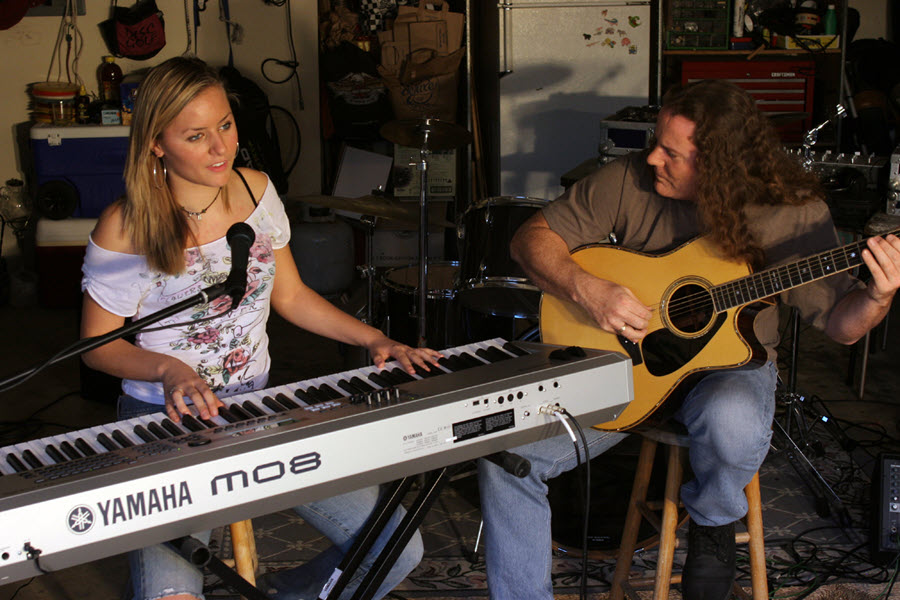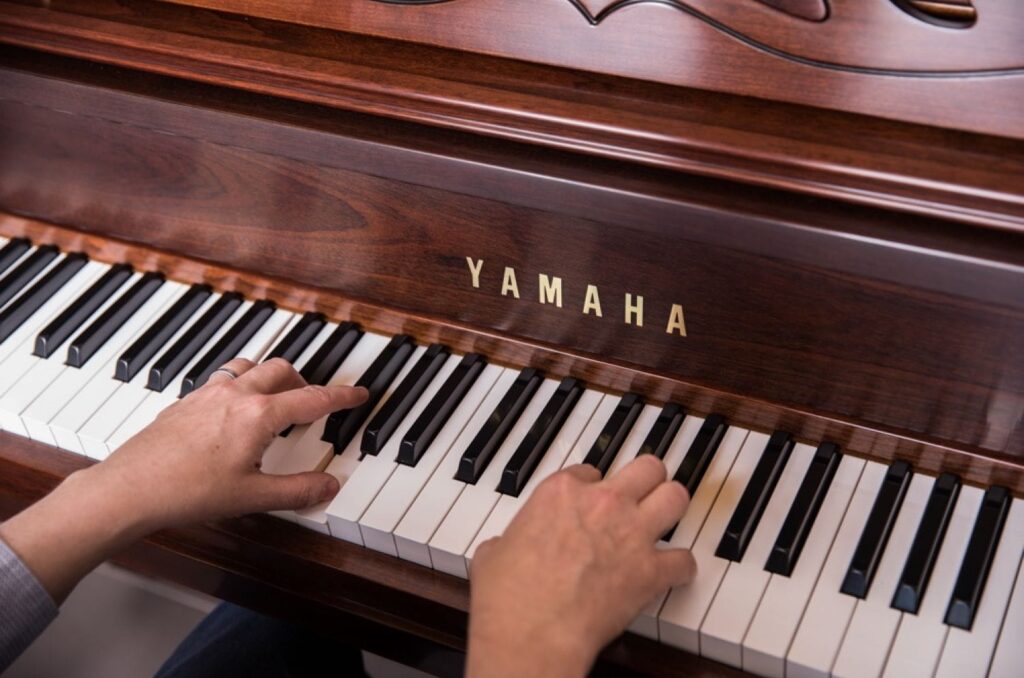Tagged Under:
What to Do When There’s No Bass Player, Part 2
Add more movement to your left-hand bass playing with walking bass lines.
In Part 1 of this two-part series we covered the fundamentals of left-hand bass playing. Now we’ll add more movement to your playing and cover the basics of how bass players navigate through busy chord changes.
How to Create Walking Bass Lines
The main concept of walking bass lines is to play notes on each beat of the measure, providing both energy and momentum to the groove. This style was first heard in jazz in the 1930s and grew and developed from there. You can certainly hear it in the early R&B and rock ‘n’ roll music of the 1950s (think Little Richard, Chuck Berry, Elvis and so many others), and this is a style of music and playing that we still draw on today. Here is one of the most common lines used in that style of music (note that in this audio clip, I play each bar twice):

The first three notes clearly outline the major triad, followed by a passing tone (these are notes in-between chord tones) on the way up to the flatted seventh. From this example we can already see a couple of best practices when crafting a walking bass line:
1) Stick to the more fundamental notes of the chord. The root, the fifth, the third and the seventh is the suggested priority.
2) Try to have those notes occur on beats one and three when playing in 4/4 time. Use passing tones on what are considered the weaker beats (two and four).
It’s fine to repeat a note — particularly the root or the fifth; it’s the constant rhythm of the line that’s most important. So a good variation of the line would be as follows (again, in this audio clip, I play each bar twice):

Connecting To Other Chords
The next challenge is to come up with ways to connect the bass line between different chords. The obvious choice is to approach the new chord with a note from either above or below. But that note can be either a whole step away, which is usually a scale tone note, or a half-step away, which will often be a chromatic passing tone (my personal favorite). To demonstrate, here’s the first walking bass line I demonstrated, this time played over the root chord (in this case, again, C7), then repeated (transposed) under the new chord — in this case, F Dominant seventh, which is the IV chord in the key of C.

After playing the figure under the C7 chord I move to the F7, and you can see that the transition happens with a half-step approach from below — a movement that has a nice “pull” up into the F. Another choice would be to move down chromatically from the G on beat 3 to a G-flat to go into the F, as shown and demonstrated below. This also has a nice “pull” to it.

This next example uses some repeated notes to show how you can craft simple lines based on chord tone arpeggiations.

Notice how the line climbs up through the F7 to come back to the C an octave higher. Then we arpeggiate back down to the lower octave, approach the next F from below, and finally walk down through scale tones, using a chromatic passing tone at the end to approach the C.
Scale Tone Walking
Now let’s walk up and down through more linear scale tones, with an added dash of chromatic passing tones.

In each measure, I’m always connecting into the next chord with a half-step approach, and I fill in notes on my way to get there.
Let’s change up the chord progression to apply these concepts to a different situation, with more chords:

As you can hear, beats 1 and 3 have strong chord tones, I’m using my preferred half-step approaches, and each chord is clearly spelled out — mission accomplished!
Here’s one more variation:

Add More Momentum to Your Lines
After you’ve gotten comfortable crafting walking lines, you can try adding this repeated note rhythmic device onto some of your notes:

Doubling some notes in this way gives your lines a little more bounce and adds energy to them. But don’t overdo it: a little goes a long way.
All audio played on a Yamaha P-515.
Check out our other Well-Rounded Keyboardist postings.
Click here for more information about Yamaha keyboard instruments.














